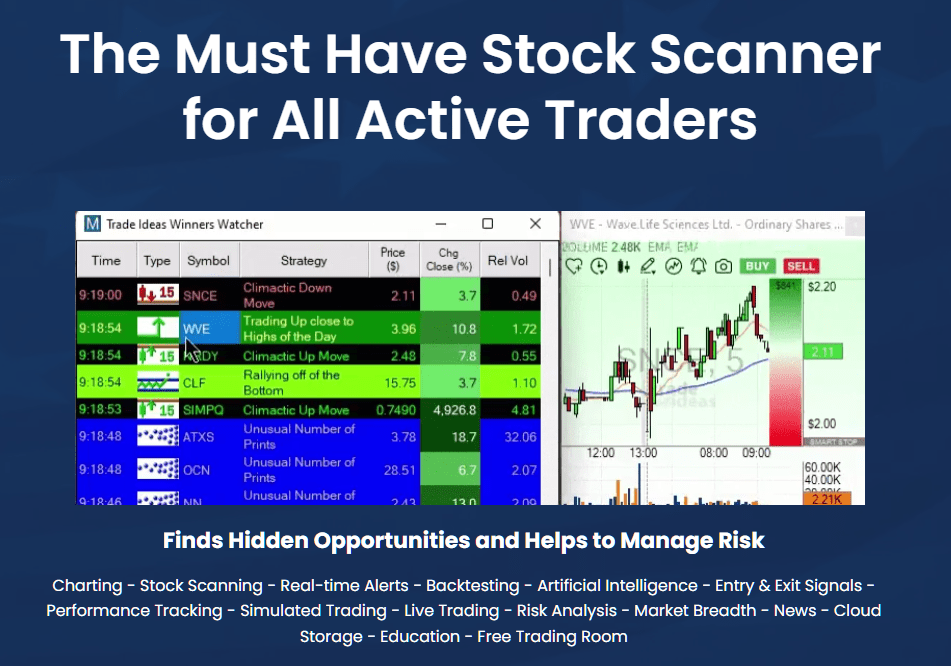20 Great Ideas For Picking AI Stock {Investing|Trading|Prediction|Analysis) Sites
20 Great Ideas For Picking AI Stock {Investing|Trading|Prediction|Analysis) Sites
Blog Article
Top 10 Tips On Assessing The Cost And Cost Of Ai Stock Predicting/Analyzing Trading Platforms
Analyzing the costs and prices of AI analysis and stock prediction platforms is vital to ensure you are getting the most value for your money without incurring hidden costs or unexpected costs. Pricing structures differ widely, and it is crucial to understand what you're getting for the money. Here are ten top tips to help you evaluate the price and value of these platforms.
1. Understanding the Pricing Model
Subscription based: Verify if the platform charges monthly or annually and the features that each tier offers.
Pay-per-use: Find out whether you are charged based on the usage of the platform (e.g. number of trades or requests for data).
Freemium: Find out whether a platform offers an unrestricted free tier or adds additional charges for premium features.
2. Compare Pricing Tiers
Features breakdown: Check out the features included in each price the tier (e.g., basic, professional, or enterprise).
Scalability: Ensure your pricing levels match your needs, regardless of regardless of whether you're a solo trader or a professional.
Upgrade flexibility: Find out if your plan can be easily upgraded or decreased as your requirements change.
3. Evaluate Hidden Costs
Data fees: Make sure to check if there are any extra charges for premium data (e.g. real-time data or advanced analytics).
Brokerage fees: Check whether there are any extra charges associated with the platform to be integrated with brokers or execute trades.
API use. Assess if extra charges are incurred for API access, or for frequent API usage.
4. Take a look at the free Trials and Demos
Trial period. Check out platforms that offer a trial or demo so that you can try their features out before committing.
Trial limitations: Decide whether you are able to use all the features of the trial or only the trial's features in a limited amount.
No-commitment options: Ensure you can cancel the trial without being charged when the program doesn't satisfy your requirements.
5. Find out about discounts and specials.
Discounts on annual plans: See if there are any discounts provided by the platform in comparison to their monthly plans.
Referral programs - See whether there are any discount or credits that you can use to refer new users.
Prices for institutions In the event that you are part of a company which is larger, inquire about pricing for bulk orders or institutions.
6. ROI (Return on Investment) How do you evaluate the return?
Cost vs. worth: Determine if the capabilities and forecasts offered by the platform justifies the cost. Do you have time saved or make better choices in trading?
Examine the platform's performance history or testimonials from users in order to estimate its potential ROI.
Cost alternatives - Compare the platform's price with the cost that could be incurred for not using it (e.g., missed chance, analysis time manually).
7. Review Cancellation and Refund Policies
Cancellation Terms: You can cancel without hidden charges or penalties.
Refund policy: Find out if the platform offers refunds for unutilised parts of your subscription.
Auto-renewal (automatic renewal) Learn whether you need to renew your subscription on a regular basis. Also, learn how to remove yourself from the subscription.
8. Examine Transparency in Pricing
Clear pricing page: Ensure whether the platform has pricing pages that are complete, transparent, and does not include any hidden fees.
Customer support: Contact customer service to clarify any pricing issues or costs.
Contract Terms: Read the conditions of service to determine if there are any agreements with a long-term term or penalties.
9. Compare with Competitors
Comparing the features and prices of platforms with their competitors will help you get the best price.
User reviews: Read user feedback and check whether other users agree that it's worth the effort.
Market positioning: Determine if it is priced at an upper-end, mid-range or low-cost choice and if it is in line with what you expect.
10. Think about the long-term costs
Price increases: Determine whether there is a pattern of price increases and how often they occur.
Additional features to your plan Decide if you're in need of an upgrade, or if the new features are already within your existing plan.
Scalability costs: Ensure the pricing of your platform is reasonable as your trading activity or data requirements grow.
Bonus Tips
Explore a variety of platforms. Test them all during a free trial to compare their performance.
Negotiate prices: If you're a large-volume user or part of a larger institution, ask about special pricing or discounts.
You can find educational free sources on certain platforms.
The following tips can help you evaluate the pricing and cost of AI software for predicting and analyzing stocks. It is possible to pick one that is suitable for your budget and provides the features you require. A good platform price should be able to combine affordability with performance. This will help you attain the best trading results. Have a look at the best incite for more advice including ai trader, stock analysis tool, incite, ai trading app, ai hedge fund outperforms market, ai trading platform, ai stock price prediction, stock analysis websites, chart analysis ai, copyright advisor and more.
Top 10 Suggestions To Judge The Speed And Latency Of Ai Platforms For Trading Stocks
Latency and speed are crucial elements when it comes to evaluating AI stock prediction and analysis platforms, especially for algorithmic traders, active traders as well as high-frequency traders. Even milliseconds of delay can influence the execution of trades as well as profitability. Here are 10 top suggestions to determine the speed and latencies of these platforms.
1. Real-time Data Feeds to evaluate
Data delivery time: The platform must provide real-time, accurate data within a short period of time (e.g. with sub-millisecond delays).
Nearness of the data source: To reduce the time it takes to transfer data, verify if your platform's servers can be located near major exchanges.
Data compression - Verify that the platform uses efficient data compression techniques to increase data delivery speed.
2. Time to test trade execution
Speed of processing orders The speed at which the platform executes and processes trades following your submission of an order.
Direct Market Access: Confirm that the platform provides DMA. DMA is a feature which allows you to transmit orders directly to exchanges without intermediaries.
Execution Reports: Verify if your platform provides specific reports on the execution of orders, including timestamps.
3. Examine the Platform's Responsiveness
User interface (UI or speed of the user interface) It is the speed at which a platform's UI responds to the inputs you enter (e.g. clicking buttons or loading graphs).
Chart updates: Make sure that charts and visualisations update in real-time, with no lag.
Performance of mobile apps If you are using a mobile app be sure that it is running as quickly as the desktop version.
4. Check for Low-Latency Infrastructure
Server locations: The platform should use low-latency, high-speed servers that are close to major financial hubs or exchanges.
Co-location service: See if the platform offers co-location, which allows you to host your trading algorithms on servers near to the exchange.
High-speed networks: Determine if the platform uses fiber optic networks that are high-speed or technology with low latency.
5. Assess the Backtesting and Simulation speed
Find out how fast your platform is able to analyse and analyze past data.
The latency on platforms is required to permit real-time simulations of trades.
Parallel processing (or distributed computing): Find out what platforms use parallel or distributed processing to accelerate complex calculations.
6. Check API Latency
API response times: Determine how quickly APIs respond to requests (e.g. retrieving information from the platform, placing orders).
Rate limits: Ensure that the API has adequate limits on rates to prevent delays when trading at high frequency takes place.
WebSocket Support: Verify if the platform supports WebSocket protocols that stream data in real time and with low latency.
7. Test Platform Stability Under load
High-volume trading: Simulate high-volume trading scenarios in order to determine if the platform remains reliable and stable.
Test your platform during periods of extreme market volatility.
Test your strategy for stress Test your strategy: Find out whether the platform allows users to test their strategy under extreme conditions.
8. Evaluation of Network and Connectivity
Internet speed requirement: For optimal performance, make sure that your internet connection speed is at the recommended platform's speed.
Reliable connections: Make sure that the platform has redundant internet connections to prevent downtime.
VPN latency: When you use the VPN platform, make sure to determine if the latency is significant and if you have alternatives.
9. Make sure you are aware of features that speed-optimize your computer.
Pre-trade Analyses: Check whether the platform offers the pre-trade analysis in order to maximize order processing and execution speed.
Smart Order Routing (SOR). Verify that the platform utilizes SOR to identify the most speedy and cost efficient execution venues.
Monitoring latency: Check if your platform has tools that let you examine and monitor latency in real-time.
Review User Feedback & Benchmarks
User reviews: Research user feedback to gauge the platform's speed as well as latency performance.
Benchmarks from third parties Find independent benchmarks or reviews that evaluate the speed of the platform versus that of its competitors.
Case studies: Find out if the platform offers cases studies or testimonials that showcase its ability to work with low-latency.
Bonus Tips:
Trial time: You are able to use a free demo or trial to test out the performance and latency of the platform.
Support for customers: Ensure that the platform offers customer support in order to reduce latency and other issues.
Hardware requirements: Find out if the platform requires specific hardware to ensure maximum performance.
With these suggestions, it is possible to be able to accurately evaluate the speed, latency, and the accuracy of AI software for analyzing and predicting stocks. This will allow you to select a system based on your trading requirements and minimize any possible delays. A low latency is essential for high-frequency or algorithmic traders where even a small delay could affect their profits. Have a look at the best best stock advisor for blog tips including ai hedge fund outperforms market, ai trader, ai hedge fund outperforms market, ai stocks to invest in, canadian ai stocks, best stock analysis app, best stock analysis app, trading ai, trading chart ai, ai stock prediction and more.